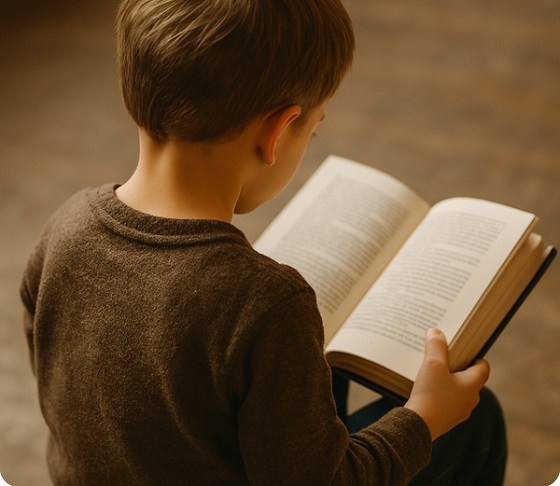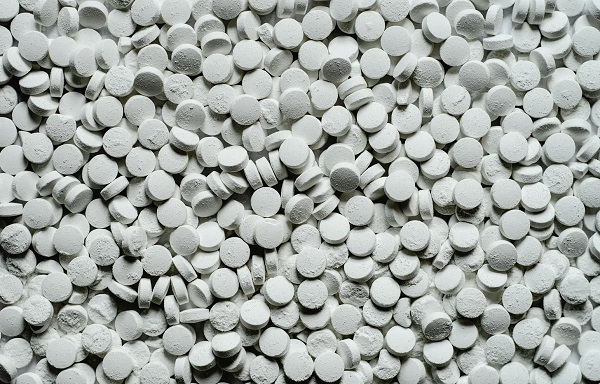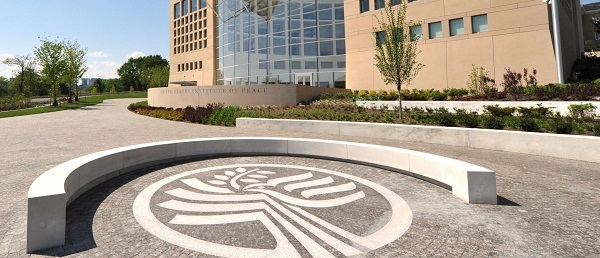Frontier Centre for Public Policy
We should follow New Zealand on housing and free up more land for growth

From the Frontier Centre for Public Policy
By Wendell Cox
Attempts to contain ‘urban sprawl’ have driven land prices sky-high. It’s time to abandon densification strategies.
Not so long ago, house prices tended to be around three times household incomes in most housing markets in Canada, the U.S., the U.K., Ireland, Australia and New Zealand. But over the past half-century, many local and provincial governments have tried to stop the expansion of urban areas (so-called “sprawl”) by means of urban growth boundaries, greenbelts and other containment strategies.
Though pleasing to planners, the results have been disastrous for middle- and lower-income households, sending housing prices through the roof, lowering living standards and even increasing poverty. International research has associated urban containment with escalating the underlying price of land, not only on the urban fringe where the city meets rural areas, but also throughout the contained area.
Canada’s current housing affordability crisis is centred in “census metropolitan areas” that have tried containment. Vancouver, which routinely places second or third least affordable of 94 major metropolitan areas in the annual Demographia International Housing Affordability report, has experienced a tripling of house prices compared to incomes. In the third quarter of last year, the median house price was 12.3 times median household income. In less than two decades, the Toronto CMA has experienced a doubling of its house price/income ratio, to 9.3.
Not surprisingly, both CMAs are seeing huge net departures, principally to less expensive markets nearby, such as Kitchener-Waterloo, Guelph, London, Nanaimo, Chilliwack and Kelowna. But these areas are also experiencing vanishing affordability as they too impose Vancouver- and Toronto-like policies.
In recent years, Canadian governments have adopted densification strategies — on the assumption that making cities more crowded will restore housing affordability. But evidence of that is limited. Yonah Freemark of the Urban Institute characterizes the literature as indicating “that upzonings offer mixed success in terms of housing production, reduced costs, and social integration in impacted neighborhoods; outcomes depend on market demand, local context, housing types, and timing.”
Like Canada, New Zealand has seen its house prices grow much faster than household incomes, also mainly because of urban containment policies. Auckland routinely ranks as one of the world’s least affordable markets. But in what may be a watershed moment for housing policy worldwide, New Zealand’s recently elected coalition government is giving up on densification and instead, with its Going for Housing Growth program, is aiming at the heart of the issue by addressing the cost of land.
Under new proposals, local governments will be required to zone enough land for 30 years of projected growth and make it available for immediate development. According to the government, local governments’ deliberate decision to restrain growth on their fringes has “driven up the price of land, which has flowed through to house prices,” and it cites research indicating that “urban growth boundaries add NZ$600,000 (C$500,000) to the cost of land for houses in Auckland’s fringes.”
The new policy will rely on a 2020 act allowing public agencies and private developers to establish “Special Purpose Vehicles” — corporations established for financing housing-related infrastructure, with the costs to be repaid by homeowners over up to 50 years. This removes the infrastructure burden from governments, as has also been done in “municipal utility districts” (MUDs) in Texas and Colorado. MUDs are independent entities empowered to issue bonds and collect fees to finance and manage local infrastructure for new developments.
New Zealand’s government believes guaranteeing plentiful access to land will result in an increased supply “inside and at the edge of our cities … so that land prices are not inflated by artificial planning restrictions.” The same strategy could help here. Unlike most urban planners, most Canadians do not want higher population density. A 2019 survey of younger Canadian households by the Mustel Group and Sotheby’s found that on average across four metropolitan areas (Toronto, Montreal, Vancouver and Calgary) 83 per cent of such families preferred detached houses, though only 56 per cent had actually bought one.
Households that move from the big city to Kitchener-Waterloo, say, or Chilliwack not only want to save money, they also want more house and probably a yard. Detached housing predominates in these affordability sanctuaries, compared to the Vancouver and Toronto CMAs.
Urban planners continue to complain about urban expansion, but that is how organic urban growth occurs. Toronto and Vancouver show that the cost of taming expansion is unacceptably high: inflated house prices, higher rents and, for increasing numbers of people, poverty. It is time to prioritize the well-being of Canadian households, not urban planners.
Wendell Cox, a senior fellow at the Frontier Centre for Public Policy, is author of the Centre’s annual Demographia International Housing Affordability report.
Education
Our Kids Are Struggling To Read. Phonics Is The Easy Fix

From the Frontier Centre for Public Policy
One Manitoba school division is proving phonics works
If students don’t learn how to read in school, not much else that happens there is going to matter.
This might be a harsh way of putting it, but it’s the truth. Being unable to read makes it nearly impossible to function in society. Reading is foundational to everything, even mathematics.
That’s why Canadians across the country should be paying attention to what’s happening in Manitoba’s Evergreen School Division. Located in the Interlake region, including communities like Gimli, Arborg and Winnipeg Beach, Evergreen has completely overhauled its approach to reading instruction—and the early results are promising.
Instead of continuing with costly and ineffective methods like Reading Recovery and balanced literacy, Evergreen has adopted a structured literacy approach, putting phonics back at the centre of reading instruction.
Direct and explicit phonics instruction teaches students how to sound out the letters in words. Rather than guessing words from pictures or context, children are taught to decode the language itself. It’s simple, evidence-based, and long overdue.
In just one year, Evergreen schools saw measurable gains. A research firm evaluating the program found that five per cent more kindergarten to Grade 6 students were reading at grade level than the previous year. For a single year of change, that’s a significant improvement.
This should not be surprising. The science behind phonics instruction has been clear for decades. In the 1960s, Dr. Jeanne Chall, director of the Harvard Reading Laboratory, conducted extensive research into reading methods and concluded that systematic phonics instruction produces the strongest results.
Today, this evidence-based method is often referred to as the “science of reading” because the evidence overwhelmingly supports its effectiveness. While debates continue in many areas of education, this one is largely settled. Students need to be explicitly taught how to read using phonics—and the earlier, the better.
Yet Evergreen stands nearly alone. Manitoba’s Department of Education does not mandate phonics in its public schools. In fact, it largely avoids taking a stance on the issue at all. This silence is a disservice to students—and it’s a missed opportunity for genuine reform.
At the recent Manitoba School Boards Association convention, Evergreen trustees succeeded in passing an emergency motion calling on the association to lobby education faculties to ensure that new teachers are trained in systematic phonics instruction. It’s a critical first step—and one that should be replicated in every province.
It’s a travesty that the most effective reading method isn’t even taught in many teacher education programs. If new teachers aren’t trained in phonics, they’ll struggle to teach their students how to read—and the cycle of failure will continue.
Imagine what could happen if every province implemented structured literacy from the start of Grade 1. Students would become strong readers earlier, be better equipped for all other subjects, and experience greater success throughout school. Early literacy is a foundation for lifelong learning.
Evergreen School Division deserves credit for following the evidence and prioritizing real results over educational trends. But it shouldn’t be alone in this.
If provinces across Canada want to raise literacy rates and give every child a fair shot at academic success, they need to follow Evergreen’s lead—and they need to do it now.
All students deserve to learn how to read.
Michael Zwaagstra is a public high school teacher and a senior fellow at the Frontier Centre for Public Policy.
Economy
Support For National Pipelines And LNG Projects Gain Momentum, Even In Quebec

From the Frontier Centre for Public Policy
Public opinion on pipelines has shifted. Will Ottawa seize the moment for energy security or let politics stall progress?
The ongoing threats posed by U.S. tariffs on the Canadian economy have caused many Canadians to reconsider the need for national oil pipelines and other major resource projects.
The United States is Canada’s most significant trading partner, and the two countries have enjoyed over a century of peaceful commerce and good relations. However, the onset of tariffs and increasingly hostile rhetoric has made Canadians realize they should not be taking these good relations for granted.
Traditional opposition to energy development has given way to a renewed focus on energy security and domestic self-reliance. Over the last decade, Canadian energy producers have sought to build pipelines to move oil from landlocked Alberta to tidewater, aiming to reduce reliance on U.S. markets and expand exports internationally. Canada’s dependence on the U.S. for energy exports has long affected the prices it can obtain.
One province where this shift is becoming evident is Quebec. Historically, Quebec politicians and environmental interests have vehemently opposed oil and gas development. With an abundance of hydroelectric power, imported oil and gas, and little fossil fuel production, the province has had fewer economic incentives to support the industry.
However, recent polling suggests attitudes are changing. A SOM-La Presse poll from late February found that about 60 per cent of Quebec residents support reviving the Energy East pipeline project, while 61 per cent favour restarting the GNL Quebec natural gas pipeline project, a proposed LNG facility near Saguenay that would export liquefied natural gas to global markets. While support for these projects remains stronger in other parts of the country, this represents a substantial shift in Quebec.
Yet, despite this change, Quebec politicians at both the provincial and federal levels remain out of step with public opinion. The Montreal Economic Institute, a non-partisan think tank, has documented this disconnect for years. There are two key reasons for it: Quebec politicians tend to reflect the perspectives of a Montreal-based Laurentian elite rather than broader provincial sentiment, and entrenched interests such as Hydro-Québec benefit from limiting competition under the guise of environmental concerns.
Not only have Quebec politicians misrepresented public opinion, but they have also claimed to speak for the entire province on energy issues. Premier François Legault and Bloc Québécois Leader Yves-François Blanchet have argued that pipeline projects lack “social licence” from Quebecers.
However, the reality is that the federal government does not need any special license to build oil and gas infrastructure that crosses provincial borders. Under the Constitution, only the federal Parliament has jurisdiction over national pipeline and energy projects.
Despite this authority, no federal government has been willing to impose such a project on a province. Quebec’s history of resisting federal intervention makes this a politically delicate issue. There is also a broader electoral consideration: while it is possible to form a federal government without winning Quebec, its many seats make it a crucial battleground. In a bilingual country, a government that claims to speak for all Canadians benefits from having a presence in Quebec.
Ottawa could impose a national pipeline, but it doesn’t have to. New polling data from Quebec and across Canada suggest Canadians increasingly support projects that enhance energy security and reduce reliance on the United States. The federal government needs to stop speaking only to politicians—especially in Quebec—and take its case directly to the people.
With a federal election on the horizon, politicians of all parties should put national pipelines and natural gas projects on the ballot.
Joseph Quesnel is a senior research fellow with the Frontier Centre for Public Policy.
-

 Health2 days ago
Health2 days agoRFK Jr. says ‘everything is going to change’ with CDC vaccine policy in Michael Knowles interview
-

 Business2 days ago
Business2 days agoLabor Department cancels “America Last” spending spree spanning five continents
-

 Censorship Industrial Complex9 hours ago
Censorship Industrial Complex9 hours agoWelcome to Britain, Where Critical WhatsApp Messages Are a Police Matter
-

 Economy1 day ago
Economy1 day agoClearing the Path: Why Canada Needs Energy Corridors to Compete
-

 2025 Federal Election14 hours ago
2025 Federal Election14 hours ago2025 Federal Election Interference from China! Carney Pressed to Remove Liberal MP Over CCP Bounty Remark
-

 Addictions2 days ago
Addictions2 days agoThere’s No Such Thing as a “Safer Supply” of Drugs
-

 Uncategorized13 hours ago
Uncategorized13 hours agoPoilievre on 2025 Election Interference – Carney sill hasn’t fired Liberal MP in Chinese election interference scandal
-

 Business1 day ago
Business1 day agoTariff-driven increase of U.S. manufacturing investment would face dearth of workers









